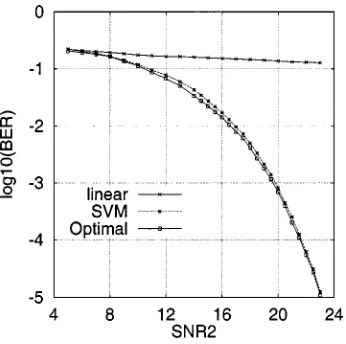Support Vector Machine Multiuser Receiver for DS CDMA Signals in Multipath Channels
Full text
Figure




Related documents
The fact that the community based study included in this review used self report of depression and all institu- tion based studies used standard diagnostic or screening instrument
The results show the existence of two different responses, one quick (at the sub-surface, through the fractured material) and the other slow, with linear behaviour which takes place
progress, has been coupled with an additional need for safety against seismic forces, making seismic design of structures as our chief priority. Amongst an arsenal
6 A major component of Comprehensive Abortion Care (CAC) provided to any women is Contraceptive and family planning services to help women prevent an unwanted
The all-party Commons foreign affairs committee first called for improvements in corporate social responsibility in a 2005 report that said activities by Canadian mining and
For the indication of importance we used the following aspects: (a) awareness: users are aware of reviews and ratings and use the information purposely in their selection process;
We examined the spatial interactions of nine female White-tailed Deer (Odocoileus virginianus) in two deeryards (winter aggregations) in northeastern Minnesota during
bruités de l’effort de ses agents, il lui faut mettre en place des rémunérations en fonction des performances pour motiver ses agents à l’effort ». • «Ce n’est pas